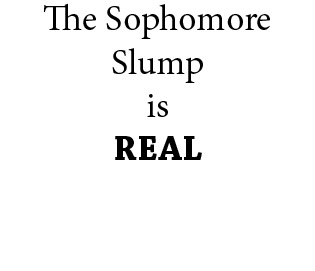
January 30, 2018
The idea of the “sophomore slump” has significance outside of the college context: An artist’s second album might not be as good as their first, star rookies lose their luster and sequels are often worse than originals. So, it only makes sense that the second semester of the first year in college may be more challenging than the first. But we don’t acknowledge this particular slump, instead implicitly deeming sophomore year the only acceptable time to experience a decline in enthusiasm. This oversight can make the experiences of some freshmen almost invisible, with serious consequences for students’ well-being, graduation rates and higher education at large. A reckoning with this question is long overdue: What happens when the “sophomore slump” actually comes during your second semester?
There are many reasons why the second semester might produce a lull. For starters, a month-long winter break can be jarring for some freshmen still working to find their groove on campus. Most high school winter breaks are two weeks long, which is short enough that most students find it easy to get back in the rhythm of classes. In college, though, the break is much longer. Brown’s winter break is double the time, and rightfully so — the work that goes into a semester warrants more time off. The issue arises when students must return to campus after such a long layoff. While students should enjoy the well-deserved break afforded to us, our semester-long adjustment to life at Brown resets. Right before heading home, we’re operating at full speed and as soon as we get back, we’re thrown right back into the thick of things, expected to pick up where we left off. It’s kind of like when you first arrive to college, minus all of the orientation stuff.



















